NavSource Online: Submarine Photo Archive
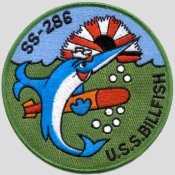
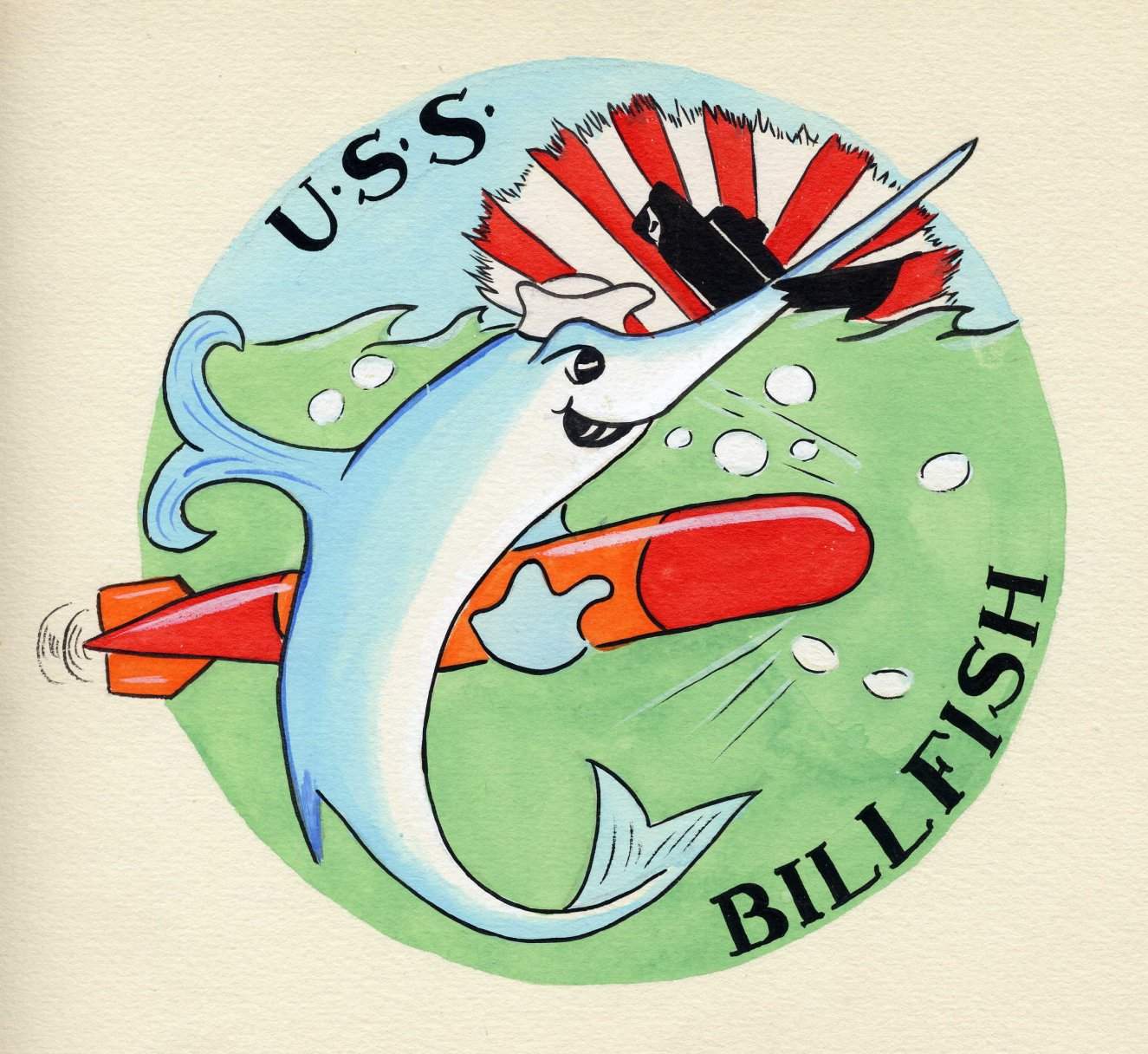
Patch on left contributed by Mike Smolinski, on right by Harold F. (Carl) Carlson & submitted by Gary Carlson
Please report any broken links or trouble you might come across to the Webmaster.
Please take a moment to let us know so that we can correct any problems and make your visit as enjoyable and as informative as possible.


| Click On Image For Full Size | Size | Image Description | Source | |
|---|---|---|---|---|
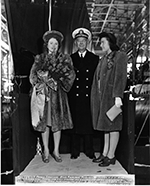 |
508k | Mrs. Lewis S. Parks, sponsor, Rear Admiral Thomas Withers, and Miss Zelda Lou Parks, Maid of Honor at launching of Billfish (SS-286), 12 November 1942. | National Archives Identifier: 7788891 Photo courtesy of catalog.archives.gov |
|
 |
14k | Commemorative post mark on the occasion of the Billfish's (SS-286) launching at Portsmouth Navy Yard, Portsmouth, N.H., 12 November 1942. | Courtesy of Jack Treutle (of blessed memory). | |
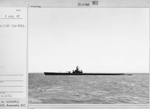 | 756k | Between 12 August 1943 and 27 August 1945 Billfish (SS-286) made eight war patrols out of Pearl Harbor. She is seen here 8 August 1943, 4 days before her first patrol. | Text courtesy of DANFS. USN photo # 80-G-39438 by Cdr. Edward J. Steichen, from National Archives and Records Administration (NARA), College Park, Maryland, courtesy of Sean Hert. |
|
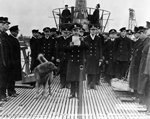 | 583k | Commissioning of Billfish (SS-286) at Portsmouth Navy Yard, New Hampshire, 20 April 1943. Commanding Officer Lieutenant Commander Frederick C. Lucas, USN, reading orders of taking command. Note, probable dog mascot. | USN photo # 80-G-62024, courtesy of the National Museum of the U.S. Navy, via flickr.com. | |
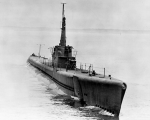 |
65k | Bow view of the Billfish (SS-286), circa 1943-45. | USN photo. | |
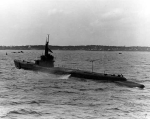 |
98k | Port side view of the Billfish (SS-286), circa 1943-45. | USN photo courtesy of ussubvetsofworldwarii.org. | |
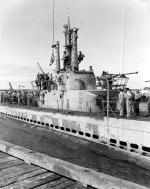 |
176k | Billfish (SS-286), possibly at Pearl Harbor, circa 1943-45. | USN photo courtesy of ussubvetsofworldwarii.org. | |
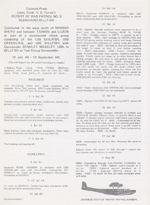 | 1.74k | 28 page PDF history of the Billfish (SS-286). | USN photo courtesy of Scott Koen & ussnewyork.com | |
 |
180k | Billfish (SS-286) at anchor at Saboga Anchorage, Perlas Islands, Panama Bay, April 1946. | Photo courtesy of R. Storm Cilley. | |
 | 449k | Groups of American sailors at the Portsmouth Navy Yard leisurely standing on the deck of two submarines, the Lapon (SS-260), and Billfish (SS-286), both flying Japanese Pennant String Flags, circa late 1940s. | Photo by The Montifraulo Collection/Getty Images, courtesy of gettyimages.com. | |
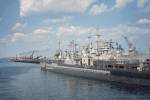 |
99k | Billfish (SS-286), in 1961, at Boston Naval Shipyard, serving as a dock side training submarine for Naval Reservists. In the background at an adjoining pier is Dayton (CL-105), in reserve. | Photo & copy Richard Leonhardt. | |
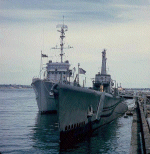 |
58k | Billfish (SS-286), in July 1962, at Boston Naval Shipyard, serving as a dock side training submarine for Naval Reservists. Moored outboard of Billfish is Siskin (MSCO-58). | Photo & copy Richard Leonhardt. | |
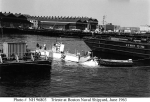 |
93k | U.S. Navy Bathyscaphe Trieste 1, operating at dockside at the Boston Naval Shipyard, Charlestown, Massachusetts, with a diver and crew assisting, 12 June 1963. Barge YC-764 is at right, and Billfish (SS-286) is in the center distance. Photographed by Belcher, Mobile Photo Group. View was probably taken during tests supporting the investigation into the loss of Thresher (SSN-593). | USNHC # NH 96803. USNHC photograph. | |
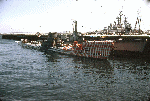 |
269k | The Toro (SS-422) moored next to Billfish (SS-286) at Pier 1W at the South Boston Annex in March 1964. | USN photo # 16255-165, from the Boston National Historical Park Collection, NPS Cat. No. BOSTS-16255, courtesy of Stephen P. Carlson, Preservation Specialist, Boston NHP, Charlestown Navy Yard, Boston. | |
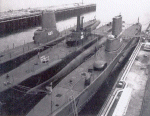 |
42k | Torsk (SS-423), Billfish (SS-286) & Carp (SS-338) moored together in Spring/Early Summer of 1968 @ Boston Navy Yard after Torsk's Decommisioning and before she was towed to Washington D.C. for use as a Reserve Trainer. Billfish or Carp was the training boat in Boston at the time. | Photo i.d. courtesy of Larry Derouin. USN photo. | |
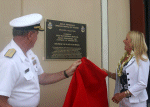 |
256k | Commander Submarine Force, U.S. Pacific Fleet (COMSUBPAC) and Naval Submarine Training Center Pacific (NAVSUBTRACEN) dedicated the NAVSUBTRACEN Damage Control Wet Trainer in honor of Chief Electrician's Mate John D. Rendernick on 17 August 2004 at the trainer on Ford Island. "It's such an overwhelming honor to be here," said Mary Kay Rendernick, daughter of John Rendernick. "I got the call that this event was going to take place and tears came from my eyes. I could not believe Dad was being recognized for something. He was a very secretive man in his day and he did not talk about being in the military too often," she said. Rear Adm. Paul F. Sullivan was the guest speaker. He thanked everyone that coordinated the event and made brief remarks about Rendernick. "This is a great occasion to honor a man of courage and a true patriot and really exemplifies what a chief petty officer is all about. Rendernick was definitely a chief petty officer and a true submariner," said Sullivan. COMSUBPAC Force Master Chief Michael Benko feels Rendernick is important to not only naval history, but to the chief petty officer heritage. "I think this ceremony was very fitting. It is the officers who take the ship into battle, but it is the chief petty officers that run the ship. We are witnesses today to Chief Rendernick and his efforts to lead his men in saving Billfish (SS-286)," said Benko. Rendernick's daughter spoke on her father's behalf and expressed the importance of the dedication. "I am amazed that he was chosen. If he were alive today, he would be overwhelmed. He said the submarine force is unique and unlike any other job. He called the old submarines "cigars under the sea." My father was not a man to cry, but there would be some tears sneaking by," she concluded. Rendernick was awarded the Navy Silver Star for heroic actions while serving on board Billfish during the war patrol in the enemy controlled waters of Makassar Strait on 11 November 1943. An enemy depth charge caused damage to the submarines internal piping and hull fittings. Continuous attacks added major damage to all systems and important equipment threatening the submarine's survivability. Rendernick took action from his battle station at the electrical control cubicle aft and immediately began leading emergency repairs to reduce the heavy flooding through the stern tubes and to restore operability to damaged equipment. He directed damage control measures aft, including pumping grease into the worst leaking stern tube and used six men and a hydraulic jack to reposition the port main motor, which had been knocked off its foundation by the shock of some extremely close depth charges. When the increasing pressure and heat reached the limit of the crew's tolerance, Rendernick had them wrap wet towels around their heads and take turns going into the livable adjacent compartment for a rest. |
USN photo # N-5539C-007 by Journalist 3rd Class Corwin Colbert, courtesy of news.navy.mil. | |
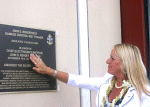 |
162k | Mary Kay Rendernick, daughter of the WW II hero Chief Electrician's Mate John D. Rendernick reacts to the unveiling of the plaque bearing her father's name, on the Damage Control Wet Trainer at Pearl Harbor on 17 August 2004. Rendernick led his crew aboard the Balao-class submarine Billfish (SS-286) in repairing severe internal damage during a WWII patrol, after she was struck by multiple depth charges. | USN photo # N-5539C-004 by Journalist 3rd Class Corwin Colbert, courtesy of news.navy.mil. | |
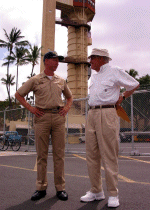 |
347k | People often wonder what they would do if they found themselves in a particularly dire situation. In the Navy, submarine, ship and aircraft simulators recreate scenarios to do just that -- test personnel in varying degrees of crisis to see how they respond. More than 60 years ago, it was far from simulated. In November 1943, Capt. (Retired) Charles W. Rush, Jr., 85, of Port Saint Lucie, Fla., and his fellow crewmembers aboard Billfish (SS-286), were inundated with depth charges by the Japanese. The constant barrage was threatening to tear the submarine apart and sink her. Rush, then a lieutenant, is credited with saving Billfish and all hands on board. He directed damage control efforts after the severe depth charge attack incapacitated the ship's captain and all officers senior to Rush. Keeping calm, Rush was able to submerge 170 feet below test depth for 12 hours with a ruptured aft pressure hull and while the submarine was riddled with major leaks through the stern tubes and various hull fittings. After another officer relieved him, Rush discovered the helm was unmanned and that no action had been taken to counter the relentless depth charge attacks. He assumed command, obtained a helmsman and proceeded to direct evasive actions by innovative maneuvers that retraced their path under the submarine's oil slick left by an explosion near the fuel ballast tanks. Rush eluded the enemy above and surfaced four hours later. "There were three (Japanese) destroyers up there. We had a 412-foot test depth. I took the boat down to 650 feet. That was the only way to keep them from getting a depth charge underneath us. A depth charge underneath you would kill you for sure. Up above it's a lot less dangerous. According to Rush, he wasn't the only one who saved the submarine. 'It was three chiefs and a first class who were the key people in this whole thing. I couldn't have done it without the Chiefs. They kept the crew going and saved the ship,' Rush added. As for the leaders of today's submariners, Rush had some advice for their role as chiefs and junior officers. 'Without courage, you might as well not be in it. You've got to have courage -- moral courage, physical courage, and honor. Honor means telling the truth even when it might not be to your advantage,' Rush said. Cmdr. Chuck Harris, Honolulu's (SSN 718) commanding officer, was glad to meet Rush and have him onboard for a tour and lunch with the crew. 'Having somebody describing firsthand the experiences they went through in the war is far more phenomenal than anything you can ever read,' said Harris. As for comparing the submarine force then and now, certain things remain constant. 'The tactics and the equipment are different, but what he said about moral courage -- when to press the attack and when to cut your losses -- those things are the same. It doesn't change,' said Harris. 'This is my first time to sit down with a World War II submarine veteran. His experiences are incredible, they're enriching and very motivating,' Harris added. Engineering Department's Master Chief, Electrician's Mate Master Chief Sean Mullaney, whose grandfather served in the Navy during World War II, was delighted to have the opportunity to meet Rush. 'I think the thing that I enjoyed the most about talking to him was asking where they got the courage to continue to go out, patrol after patrol. He said the guys got it from each other. They helped each other get through it.' Rush spent four consecutive days speaking to and meeting submariners aboard Naval Station Pearl Harbor, culminating in a Naval Submarine League awards ceremony at Lockwood Hall, the dedication of the Electrician's Mate Chief Rendernick DC Wet Trainer at Ford Island, and attendance at the Navy Submarine Birthday Ball on 13 April 2004. Rush was awarded the Navy Cross almost 60 years after his courageous efforts during World War II. |
USN photo by Journalist 3rd Class Corwin Colbert, courtesy of news.navy.mil. | |
| Back To The Main Photo Index | Back To the Submarine Index |
|
Problems and site related matters, E-mail Webmaster |
|
This page is created by Michael Mohl, and maintained by Michael Mohl All Pages © 1996 - 2025 NavSource History All rights reserved. |